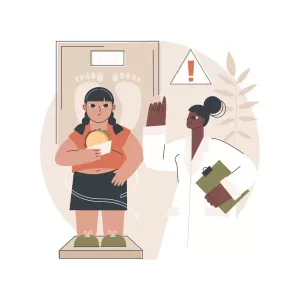

Our Review Process
Our articles undergo extensive medical review by board-certified practitioners to confirm that all factual inferences with respect to medical conditions, symptoms, treatments, and protocols are legitimate, canonical, and adhere to current guidelines and the latest discoveries. Read more.
Our Editorial Team
Shifa Fatima, MSc.
Author
Dr. Apoorva T, MHM.
MEDICAL ADVISOR
Glycemic Index of Fruits & Vegetables
Consuming fruits and vegetables is extremely important for everyone. They have several health benefits and lower the risks of diseases like blood pressure, stroke, diabetes and sometimes cancer. They prevent a host of other bodily ailments and make the functioning of the body better. Fruits and vegetables are a gold mine of vitamins and minerals and have a positive effect on digestion, sleep, blood sugar and other functions.
People with diabetes have a lot of dietary restrictions. They have to be very careful with whatever they consume and make sure it does not impact their blood sugar negatively. A glycemic chart for diabetes would greatly help in determining which vegetables and fruits are safe for people with diabetes to consume. All fruits and vegetables have a certain amount of sugar in the form of glucose or fructose. Preparing a glycemic chart for diabetes is easy as noting the glycemic range of every fruit and vegetable next to its name will show which ones are healthy to consume. Also know about sugar diet chart.
Table of Contents
What is Glycemic Index?
Every food item contains some amount of sugar. The glycemic index is a value that measures how quickly the foods increase blood sugar levels after being consumed. There are ways of how to calculate the glycemic load of fruits and vegetables. The glycemic load (GL) is calculated by multiplying the carbohydrate quality (GI) of a certain item by the quantity of carbohydrate in a portion of that food. If you’re wondering how to calculate the glycemic load while preparing a glycemic chart for someone with diabetes, just follow this method.
How Is The Glycemic Index Measured?
The Glycemic Index of Foods differs with every food item chosen, and there is no average range that all food types fit in.
The Glycemic index of foods are categorized as low, medium, or high on a scale of 0–100. Foods that have a lower glycemic index are the most ideal to consume for people with diabetes as the lower a food's glycemic index, the less impact it has on your blood sugar levels. Foods with a lower glycemic index release sugar slowly into the bloodstream, thereby maintaining normal levels of blood sugar .
There are three glycemic index ranges that are classified as follows :
LOW : 55 Or Under
MEDIUM : 56 - 69
HIGH : 70 Or Higher
Factors affecting a Food’s Glycemic Index Rating?
All fruits and vegetables have a different composition. They have varying levels of fiber, carbs, fat, protein, processing etc. there is no one average that all the fruits and vegetables fall under and different factors affect the glycemic index of all fruits and vegetables. Let's take a look at the factors that affect that glycemic index rating of foods.
1. Starch Content
Starch gelatinization happens when starchy food is subjected to liquid and heat (ie cooking). In the presence of heat, water binds with the starch and causes the starch granules to expand. Heat and water expand the hard compact granules into readily digestible granules. The glycemic index is affected when granules rupture and release their individual starch molecules causing food items to have a higher GI.
1. Particle Size and Processing
The particle size of whole grains, such as whole wheat, barley, maize, and rye, have substantially lower GI values than flours, which are much tinier particles, derived from the same grains. The more a particle is processed the likelier it is to have a higher GI. Milling, pounding, grinding, combining, mashing, and refining foods increase their GI. As a result, most processed foods have a higher GI than their unprocessed counterparts.
2. Composition Of Starch
Different fruits and vegetables have different levels of starch. This starch also differs in its chemical composition, which affects the glycemic index of the food items. Rice, for example, may contain a variety of starch structures that impact digestibility. Amylose and amylopectin are two chains of glucose that are present in different types of rice. Rice that has a higher amylopectin content is less dense and easier to digest, making their GI rate higher.
3. Amount Of Fiber
Soluble fiber-containing foods, such as oats and lentils, have a lowering effect on the glycemic index as they cause a delay when it comes to the emptying of the stomach. Insoluble fiber, such as that found in digesting bran, on the other hand, has very little influence on glucose digestibility and absorption. Thus, meals containing bran do not always have a lower GI than ones lacking bran. Overall, having food rich in fiber is good for people with diabetes.
4. Sugar Content
The sugar content of the food item influences its rating as well. Sugar is a dietary ingredient that is highly comparable to glucose, hence foods with a greater sugar content are more likely to be rated higher, but it's not necessary that foods that have more sugar will always have a higher GI as sugar often competes with starch in the body. Also know about Indian diabetes diet.
5. Protein And Fat Content
Proteins and fats may impede stomach emptying. The process through which food leaves the stomach and enters the duodenum is known as gastric emptying. The duodenum, the first portion of the small intestine, helps digestion by secreting enzymes into the stomach contents. By delaying stomach emptying, food is absorbed more slowly by the body, lowering blood glucose levels. High protein foods usually have a lower GI as it takes time for them to digest and release sugar into the bloodstream. Know about fruit for diabetes.

Glycemic Index Chart For Common Fruit
For people with diabetes, having a glycemic load food list can be very handy to determine which fruits and vegetables to eat. Here’s a glycemic load food list that might help determine foods that have a lower GI.
.png)
Glycemic Index Chart For Common Vegetables
Indian food comprises a lot of different vegetables and ingredients. Here’s a list of some common vegetables that have a low GI. Having food with low glycemic index can be very beneficial for people with diabetes. These values are of vegetables after boiling.
.png)
The glycemic index of different fruits and vegetables varies depending on how it's cooked, the quality of produce, the size of the fruit or vegetable etc. these are estimates of where some of the most common fruits and vegetables fall on the glycemic index. It is always better to consult a specialist when it comes to consuming food with low glycemic index. Also know more about diabetes diet chart.
Bottomline
Fruits and vegetables are high in vitamins and minerals, and they help with digestion, sleep, blood sugar, and other functions. Making a glycemic load chart of Indian foods for diabetes is simple; just recording the glycemic range of each fruit and vegetable will reveal which are safe to consume. The glycemic index of different foods are affected by different factors and processed foods tend to have a higher GI as compared to whole foods. People with diabetes should consume fiber-rich foods that have a lower glycemic index as that helps in maintaining blood sugar.
Disclaimer
This website's content is provided only for educational reasons and is not meant to be a replacement for professional medical advice. Due to individual differences, the reader should contact their physician to decide whether the material is applicable to their case.








